In the fast-evolving world of work, the design of our office spaces plays a crucial role in boosting creativity and productivity. Whether you’re setting up a workspace at home or revamping a commercial office, understanding contemporary design principles can transform your environment from mundane to inspiring. This article aims to bridge the gap between functionality and style, providing insights that cater to both beginners and seasoned decorators alike. By the end, you’ll have the tools and confidence to create a workspace that not only meets your needs but also feels uniquely yours.
For those new to the world of interior design, contemporary office design might feel like diving into uncharted waters. Fear not, as we’ll demystify the key elements that define a modern workspace, from selecting the right furniture to the nuances of color and lighting. Experienced decorators will appreciate the fresh perspectives and innovative ideas that we uncover, offering opportunities to refine and elevate their existing design strategies. Together, we’ll explore how contemporary design principles can be seamlessly integrated into any office setting, enhancing both form and function.
The importance of designing an efficient workspace cannot be overstated, as it directly impacts our daily productivity and overall well-being. With this guide, you’ll learn how to balance aesthetics with practicality, ensuring your office is not only visually appealing but also optimized for your workflow. We’ll delve into the latest trends and timeless techniques, providing actionable advice that you can immediately apply to your own projects. Let’s embark on this journey to create office spaces that are as dynamic and adaptable as the work we do within them.
Innovative Layouts for Modern Workspaces
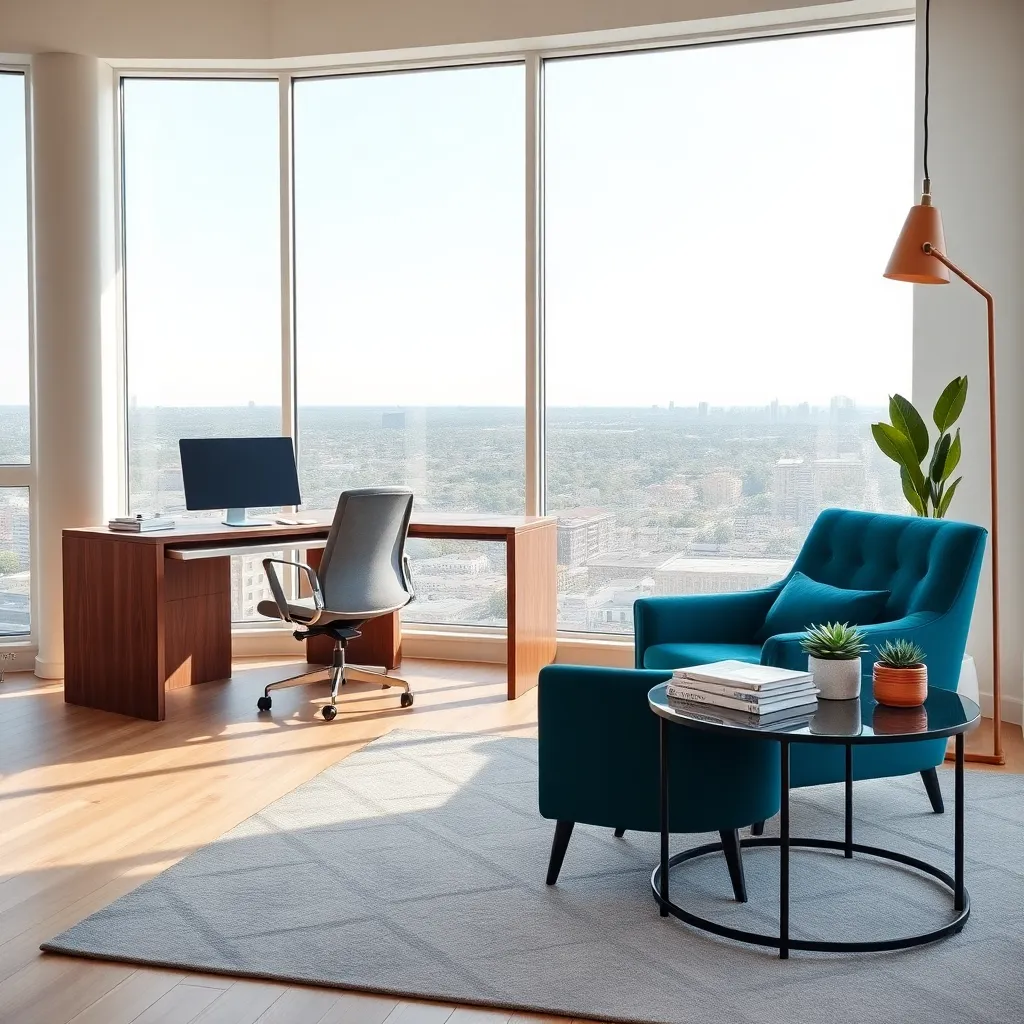
Creating innovative layouts for modern workspaces often starts with understanding the flow of movement and work habits. Consider positioning desks in a cluster arrangement to foster collaboration, while still maintaining individual workspaces with dividers or plants for privacy.
Adding versatile furniture pieces, such as adjustable desks and modular seating, allows spaces to adapt to changing needs. Choose furniture with clean lines and neutral colors, which can easily blend with any office theme and accentuate flexibility.
Lighting plays a crucial role in workspace design, influencing both aesthetics and productivity. Incorporate a mix of natural and artificial lighting by placing desks near windows and using layered lighting fixtures like pendant lights and desk lamps to reduce eye strain.
To inspire creativity, integrate vibrant colors strategically throughout the workspace, such as in accent walls or artwork. Use colors like blues and greens to promote calmness and focus, while touches of yellow or orange can boost energy and creativity.
Integrating Technology Seamlessly
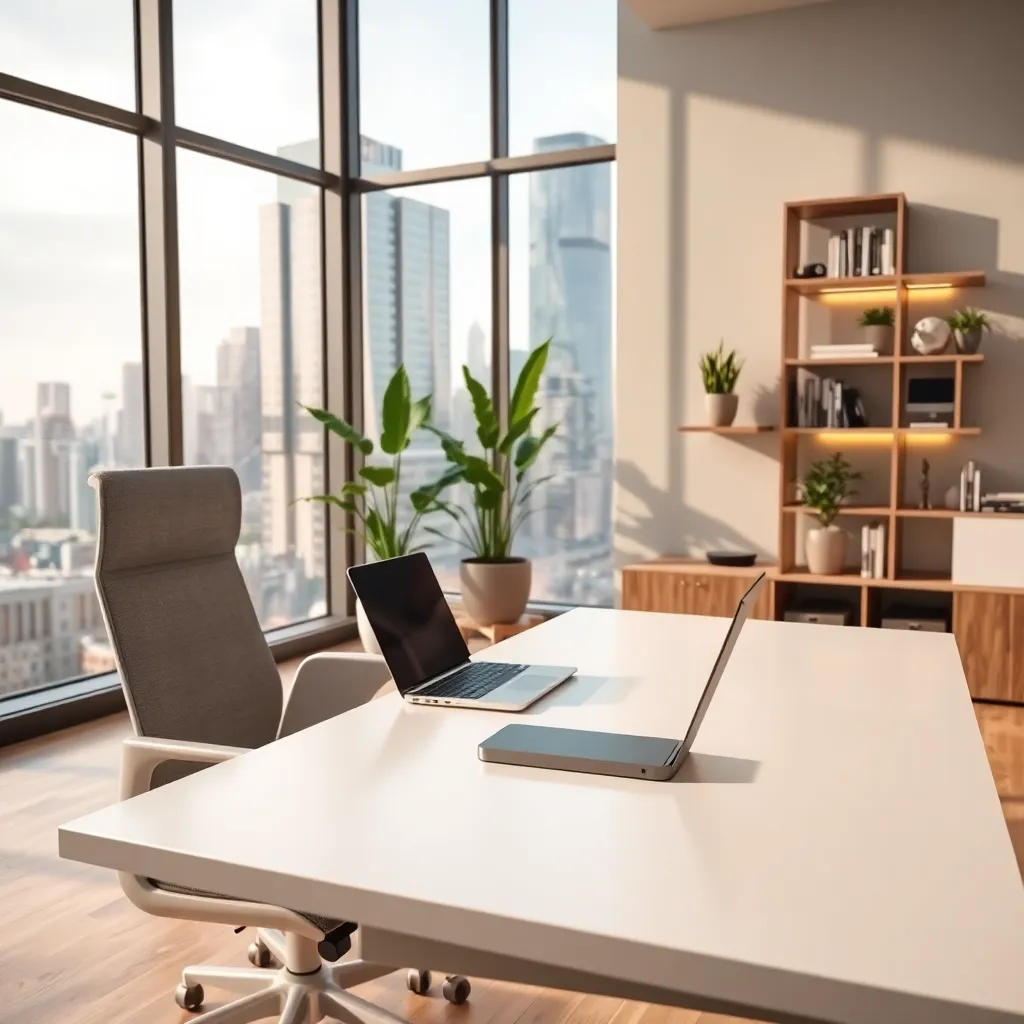
Incorporating technology into a contemporary office requires thoughtful consideration of both functionality and aesthetics. Begin by selecting furniture that can accommodate cables and devices smoothly, such as desks with built-in charging ports and cable management systems.
Choosing the right color scheme can also enhance technology integration. Opt for neutral tones like soft greys or whites to create a clean backdrop that allows tech devices to blend in seamlessly.
An important aspect is to balance tech with comfort. Position ergonomic chairs and adjustable-height desks near windows to leverage natural light while ensuring that monitors are placed to reduce glare.
For a sophisticated touch, consider wireless solutions to maintain a clutter-free environment. Invest in Bluetooth-enabled speakers and smart lighting systems, which can be controlled via smartphone or voice commands.
Advanced decorators might explore integrating smart glass technology for privacy and energy efficiency. This innovative feature can adjust transparency at the touch of a button, offering a sleek, modern look while maintaining functionality.
Sustainable Materials and Practices
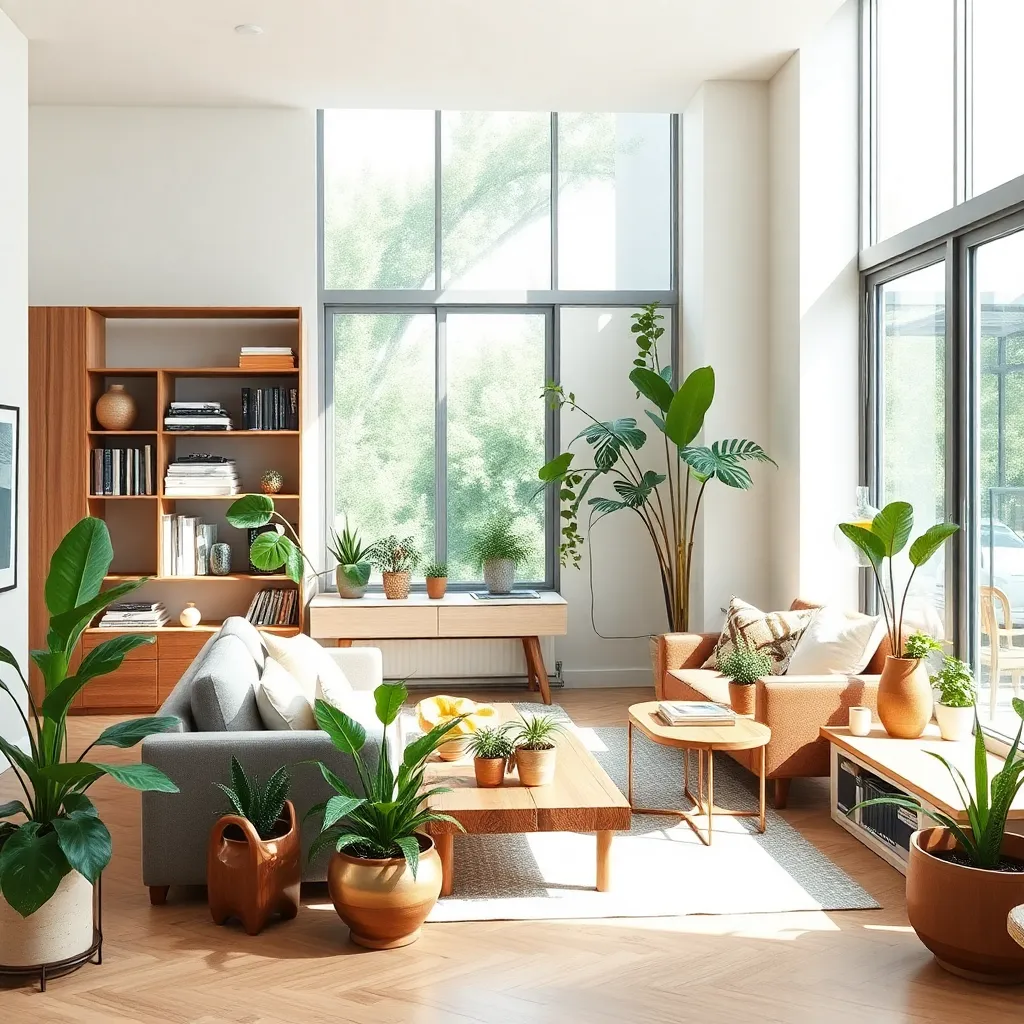
Incorporating sustainable materials into your contemporary office design is not only environmentally responsible but also enhances the aesthetic appeal of your workspace. Opt for furniture made from reclaimed wood or bamboo, which are not only durable but also bring a warm, natural feel to the office environment.
Consider using non-toxic, low-VOC paints to keep the air quality high and promote a healthier workspace. For flooring, choose options like cork or linoleum, which are both renewable and offer a sleek, modern look suitable for any contemporary office.
Lighting plays a crucial role in sustainable design, so incorporate LED lighting solutions, which are energy-efficient and long-lasting. Pairing these with large windows or skylights can maximize natural light, reducing the need for artificial lighting during the day.
For advanced decorators, integrating a green wall or vertical garden not only improves air quality but also adds a stunning visual element to the office. These living installations can be tailored to fit any space and can even incorporate herbs or small plants that require minimal maintenance.
Enhancing Productivity with Design
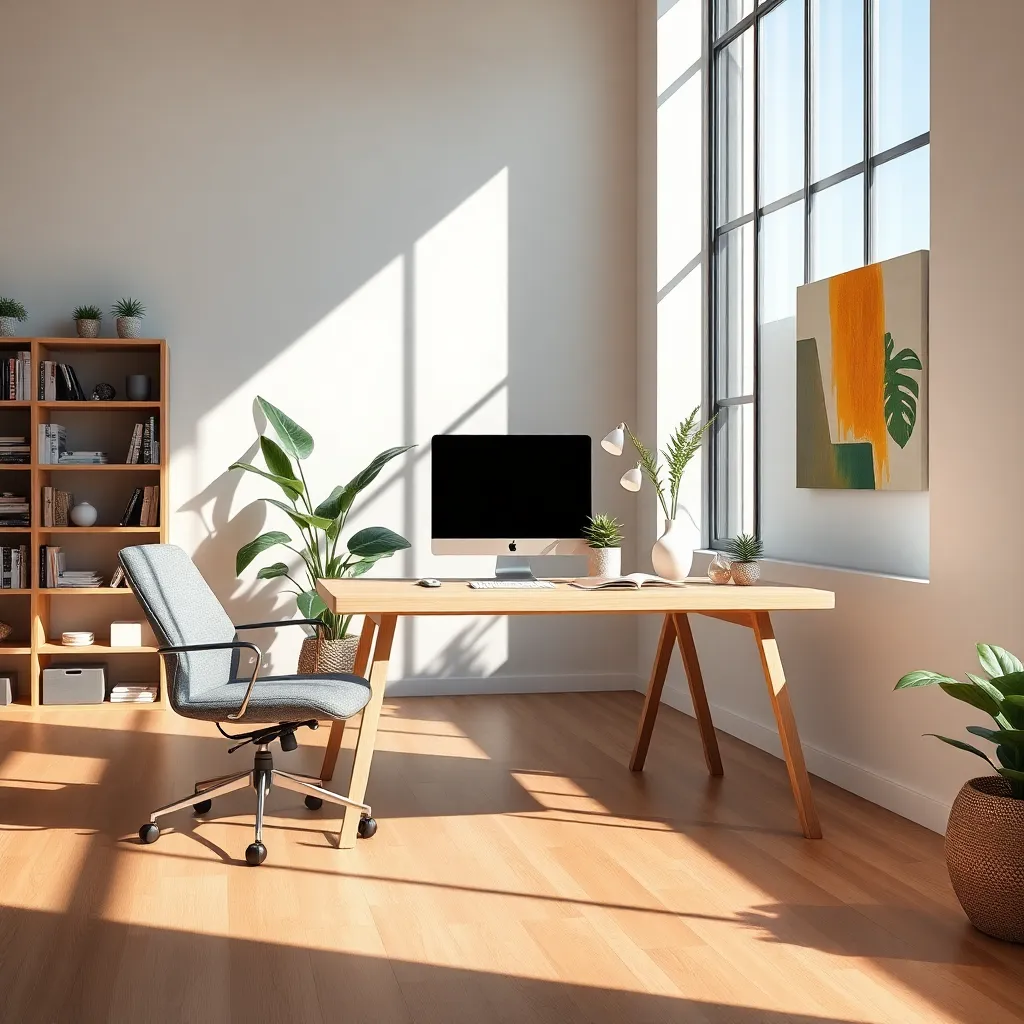
Integrating design elements that enhance productivity in a contemporary office starts with the thoughtful selection of furniture that balances functionality and style. Opt for ergonomic chairs and desks that support good posture, reducing fatigue and promoting long-term health benefits.
To create an environment that stimulates focus, consider using calming color schemes like muted blues and greens. These colors are known to reduce stress and enhance concentration, making them ideal for a work setting.
Natural light plays a crucial role in productivity, so position workstations near windows to maximize daylight exposure. If natural light is limited, use full-spectrum bulbs that mimic daylight to maintain a vibrant and energizing atmosphere.
Incorporating plants into your office design can improve air quality and increase productivity levels. Choose low-maintenance plants such as snake plants or pothos, which thrive indoors and add a touch of greenery without requiring extensive care.
Incorporating Flexible Work Areas
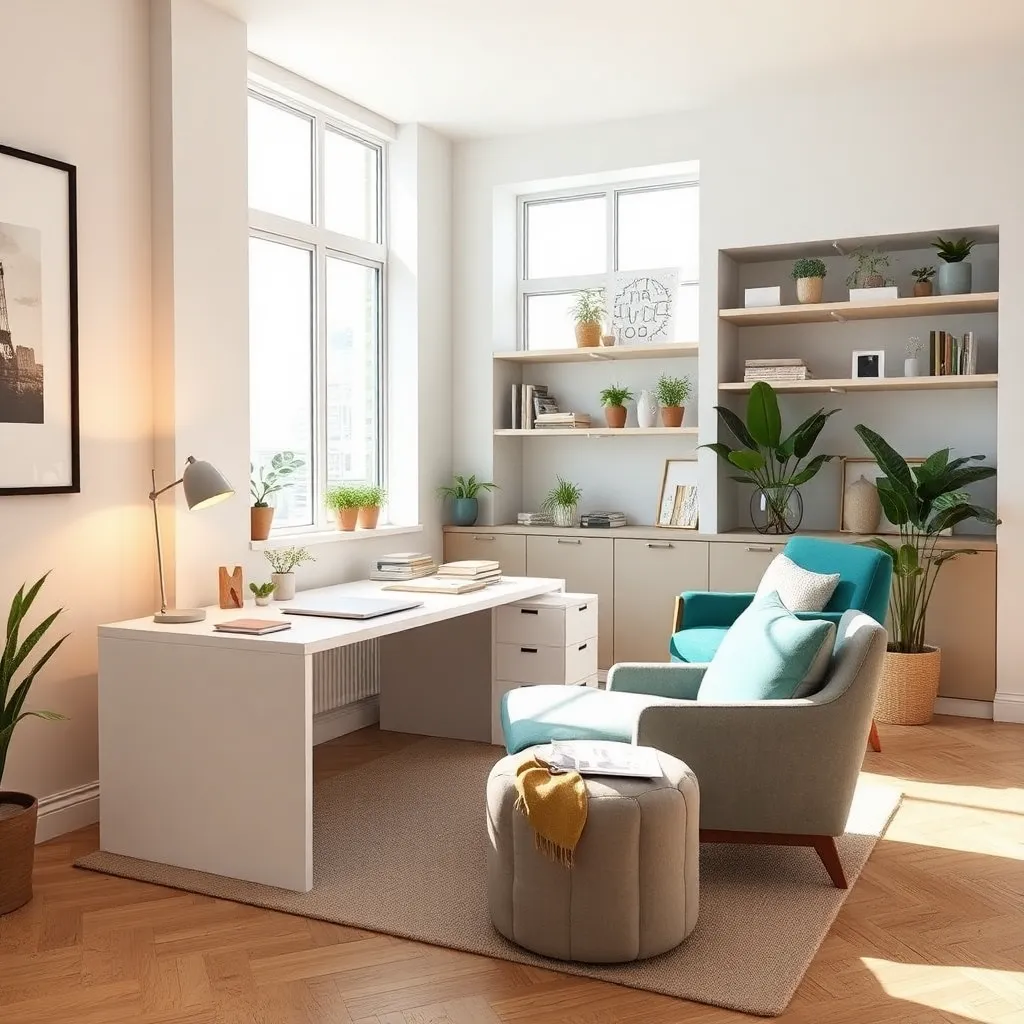
Creating flexible work areas in a contemporary office design is essential for adapting to changing needs and maximizing productivity. Incorporating multi-functional furniture such as adjustable desks and stackable chairs allows for easy reconfiguration of space.
Consider using a neutral color palette with pops of vibrant colors to stimulate creativity without overwhelming the senses. Opt for furniture with sleek lines and minimalistic designs that can blend seamlessly into various decor styles while providing functionality.
For beginners, start by selecting pieces that serve multiple purposes, like a desk that doubles as a dining table. This approach not only saves space but also ensures that your office area can evolve with your requirements.
Advanced decorators might experiment with modular shelving systems that can be easily rearranged to accommodate different tasks or projects. Such solutions offer both aesthetic appeal and practical benefits, making your workspace adaptable and dynamic.
Conclusion: Growing Success with These Plants
In exploring the intricate dance between contemporary office design and relationship dynamics, we’ve uncovered five pivotal concepts: the impact of open spaces on communication, the role of privacy in fostering trust, the importance of flexible layouts in accommodating diverse needs, the influence of color and light on mood and interaction, and the power of collaborative areas in nurturing teamwork. These insights not only enhance our understanding of workplace relationships but also provide a foundation for creating environments that support mutual respect and growth.
As a next step, consider evaluating your own workspace. Is it designed to nurture these key elements? Implement small changes, like rearranging furniture or introducing calming colors, to see immediate improvements in your interactions.
Don’t forget to bookmark this article for future reference. Having these insights at your fingertips can guide you in crafting a nurturing environment wherever you work.
Remember, the journey to successful relationships is continuous. By embracing these strategies, you pave the way for a future filled with stronger, more fulfilling connections. Let’s make the spaces we inhabit catalysts for positive change and lasting relationship success.
